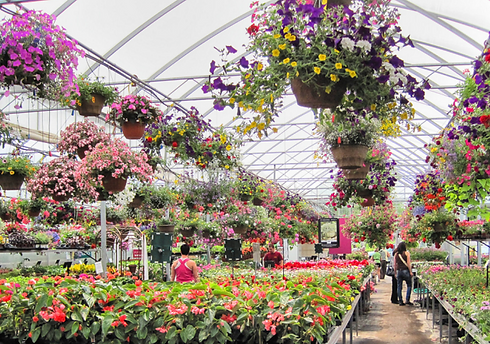Planting for
the Planet
What are Invasive Species?
An invasive species is a non-native organism that is introduced to a new area and threatens local ecosystems.
Threats of Invasive Species
Invasive species can impact an area and cause harm through both direct and indirect processes.





Competition for Resources
Changes in Environment and Ecosystem Processes
Parasitism and the Spread of Diseases
The addition of non-native plants into a community unavoidably takes up space available to native species, which can potentially smother and suffocate native plants. Water and nutrients must also be partitioned among the invasive and native species, thereby reducing the availability to native plants, and interfering with growth and reproduction. Competition between native and invasive plants for pollinator visitation may also ensue, further affecting local flora and fauna species.
Invasive plants may alter soil properties including pH, moisture, and enzyme content. This can make conditions unsuitable to native species, or even further facilitate the introduction of other invasive species by creating ideal conditions for establishment. This can disrupt vital ecosystem processes such as the movement of water by altering the properties of soil. Alteration of the local food web is another example of affected ecosystem processes.
(Sher, 2022)
As with any organism, the introduction of a plant brings with it the possibility of associated parasites. Without having co-evolved with these parasites, native species are often at a disadvantage in terms of resistance and tolerance to predation. Further, introduced species may also introduce new diseases into the ecosystem, which once again the native species have no resistance against. Because of these sudden and overwhelming appearance of exotic pathogens, extinction also a risk associated with the invasion of species.
How are Invasive Species Introduced?
Invasive species can be introduced into a new area both intentionally and unintentionally. Common methods of intentional introduction include the arrival and subsequent release of non-native species historically by colonists as well as modern introduction via agriculture and aquaculture. Unintentional methods of introduction include the transport of non-native species on boats, in luggage or on a variety of other goods being moved internationally.

The Horticultural Trade is the Main Pathway for Invasive Plant Introduction
Garden Centers and Nurseries often sell unlabelled invasive species. This knowledge gap traps gardeners into contributing to biodiversity loss.
Photo Retrieved From: Kingstonist News
References
Lennon, D. (2017, May 17). Guide to Kingston Garden Centres – Kingston News. Kingstonist News - 100% Local, Independent News in Kingston, ON. https://www.kingstonist.com/guides/guide-kingston-garden-centres-45768/
Sher, A. (2022). An introduction to conservation biology (3rd ed.). Sinauer Associates.